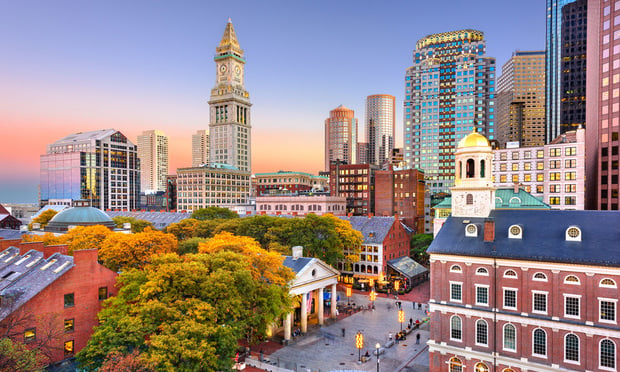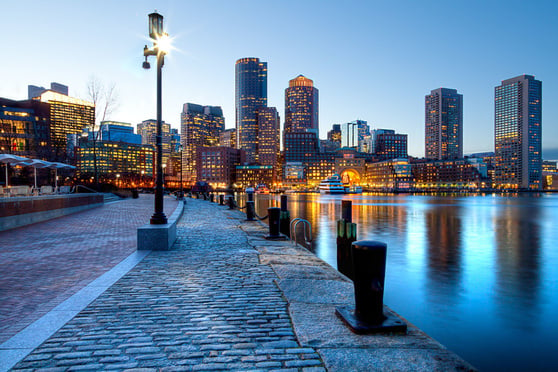The I-495 attracted positive absorption of manufacturing with 546,000 sf over the past five quarters, which is 95% of market demand. The 495 North submarket had 227,000 sf of positive absorption this quarter. The major industrial deals were Ashforth Co. and Paradigm Properties taking 44-48 Third Ave.--81,000 sf--in Somerville and Genzyme picking up 2-8 New York Ave. in Framingham at 102,000 sf and Colony Realty Partners grabbing the 186,000-sf 145 Plymouth St. in Mansfield. DivcoWest grabbed the 385,000-sf flex properties 300 RiverPark Dr. and 400 RiverPark Dr. in North Reading.
The steady numbers, however, tell a deeper story in this tumultuous market. The flex buildings--with lower vacancy--dropped asking lease rates $0.09 to $9.21 per sf and manufacturing rents were reduced 4% to $8.18 per sf.
"What we're seeing at this point in the greater Boston flex market is a stabilization of pricing," explains Brendan Carroll, VP of research for RBJ. "Statistically we're seeing a little bit of a relaxation," in the pricing of properties. "The newer, better product is leasing more rapidly and what remains available is less state-of-the-art facilities."
The newer product is commonly considered any building built after 1982, according to Carroll, which accounts for 47% of the product on the market. "[The newer product] attracted 92% of the demand on a net absorption basis, so the newer product and the better product is leasing more rapidly and actually experiencing a supply constraint. So more than anything, we may be seeing a decrease in the asking lease rate which is tied to the decreasing availability of higher quality spaces." The older product is in less demand, ergo the prices are decreasing.
"Since basically 2005, when you compare properties that have asking lease rates in two consecutive quarters, there's been a dynamic where we've been seeing landlords changing prices on existing suites and changing them up, asking for more quarter to quarter," Caroll explains. "These last two quarters we actually saw same properties have decreases in asking lease rates." The caveat to this, he continues, is the similar dynamic which continues to be common in older, non-state-of-the-art flex properties. "[These properties] are coming under increasing pressure and frequently are not able to accommodate the needs of modern light industrial operations," he says.
According to RBJ's numbers, 50% of the vacant industrial space is located in seven buildings built before, roughly, 1943. With no new construction in the pipeline, this should help lower vacancy rates, but the down-side comes from an estimation based on data from the Institute for Supply Management, which shows that waning business confidence is causing managers to reduce their inventory and, thus, their need for space during the downturn. These competing factors will most likely cause a leveling of vacancy, for better or worse.
Carroll notes an important distinction from those assumptions. "The greater Boston market, when you take a look at those macro-economic market numbers, [those numbers are] going to be affecting, more dramatically, the larger markets--like the Chicagos, the Houstons, the Atlantas--that have over one billion sf of warehouse space. Boston is a very regional distribution market, so the relatively compact inventory of 56 million sf that we have in Boston is less susceptible to general economic trends." With these mitigating factors in mind, Carroll still believes Boston is not heading into a period of dramatic growth in the expansion of the use of warehouse space.
Want to continue reading?
Become a Free ALM Digital Reader.
Once you are an ALM Digital Member, you’ll receive:
- Breaking commercial real estate news and analysis, on-site and via our newsletters and custom alerts
- Educational webcasts, white papers, and ebooks from industry thought leaders
- Critical coverage of the property casualty insurance and financial advisory markets on our other ALM sites, PropertyCasualty360 and ThinkAdvisor
Already have an account? Sign In Now
*May exclude premium content© 2024 ALM Global, LLC, All Rights Reserved. Request academic re-use from www.copyright.com. All other uses, submit a request to [email protected]. For more information visit Asset & Logo Licensing.








